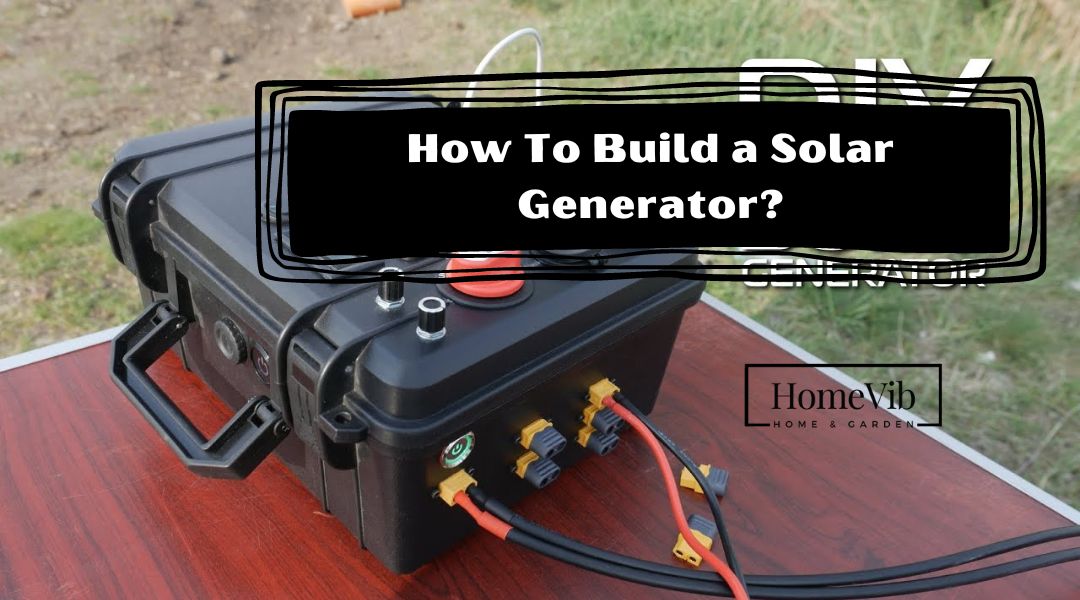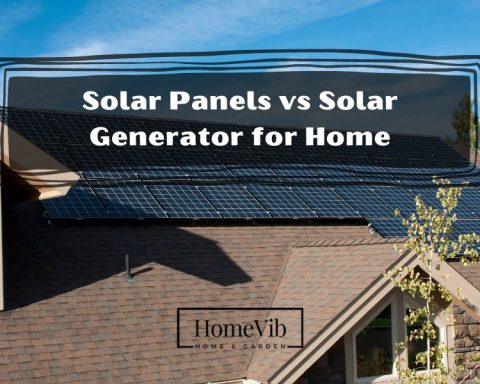If you’re interested in building your solar generator, there are a few things you need to know. A solar generator consists of three main parts: a solar panel, a battery, and an inverter.
The solar panel collects energy from the sun and converts it into an electrical current stored in the battery. The inverter turns the battery’s current into usable AC power that can run your appliances or electronic devices.
There are a few different ways to put together a solar generator. One option is to buy all components separately and put them together yourself. This can be tricky, but it can be cheaper than buying a pre-made solar generator.
If you go this route, be sure to buy a good quality solar panel and battery, as these will be the most important components of your system.
Another option is to buy a pre-made solar generator kit. These kits typically include all the components you need and detailed instructions on how to put them together. This is probably the easiest way to build a solar generator, but it can also be more expensive than buying the components separately.
What is a Solar Generator?
A solar generator is a device that converts energy from the sun into electrical power. This can be done through solar panels or a photovoltaic cell.
Solar generators are often used as a backup power source in a power outage and can also be used to power small appliances or tools.
Parts and Components You Will Need To Build A DIY Solar Generator
- Solar Panel
A solar panel is a device that converts light into electric current using the photovoltaic effect. Solar panels are made of several solar cells, usually placed in series.
- Battery
A battery is a device that stores energy in the form of electricity. Batteries power devices such as flashlights, portable radios, and electric cars.
- Inverter
An inverter is a device that converts direct current (DC) to alternating current (AC). Inverters are used to power devices such as televisions and computers.
- Charge Controller
A charge controller is a device that regulates the charging of batteries from a solar panel or other electrical sources. Charge controllers help to prevent overcharging and protect the battery from damage.
- Fuse
A fuse is a device that protects an electrical circuit from damage caused by an overload or short circuit. Fuses are made of metal and are designed to melt and break the circuit if too much current flows through them.
- AC Outlet
An AC outlet is an electrical outlet that accepts standard AC plugs. AC outlets are found in most homes and offices.
- Cable Clamps
Cable clamps secure cables and wires to a surface or each other. Cable clamps are made of metal or plastic and are available in various sizes.
- Wire Strippers
Wire strippers remove the insulation from the ends of electrical cables. Wire strippers are available in various sizes, and some models can also be used to cut wire.
- Screwdriver
A screwdriver is a tool that is used to drive screws. Screwdrivers come in various sizes and shapes and are available with various tips.
- Drill
A drill is a tool to create holes in materials such as wood or metal. Drills come in various sizes and shapes and are available with various tips.
Tools You Will Need To Build A DIY Solar Generator
There are a few basic tools that you will need to build your solar generator. The first is a drill and some drill bits. You will also need a saw to cut the lumber, preferably a miter saw.
A screwdriver and some screws are also necessary. Finally, you will need wire cutters and pliers to connect the components.
Steps To Build a Solar Generator
Solar generators are a great way to create renewable energy and reduce your carbon footprint. They are suitable for the environment but can also save you money in the long run.
There are a few different ways to build a DIY solar generator. The most popular option is solar panels, a battery, and an inverter. Another option is using solar panels and a battery wind turbine.
The best way to build a DIY solar generator is to assess your needs. How much power do you need? What appliances do you want to run? Once you know what you need, you can select the components for your solar generator.
The first step is to choose the right solar panels. You’ll need enough panels to produce the amount of power you need. If you’re not sure, consult with a solar installer or retailer.
The next step is to select a battery. The battery will store the energy produced by the solar panels and provide power when needed. Again, consult a solar installer or retailer to determine the right battery.
The final component is an inverter. An inverter converts direct current (DC) into alternating current (AC), which most appliances use. Choose an inverter that can handle the wattage of your devices.
Once you have selected all the components, it’s time to put them together! Follow the instructions with your products, and you’ll be up and running in no time.
Cost of Your Solar DIY Generator

How much would it cost to build a solar DIY generator? It depends on the size of the generator and the type.
The cost of solar DIY generators is dropping every day. It’s becoming more and more affordable for people to purchase and install solar generators in their homes. Even better, with the release of the Tesla Powerwall, solar DIY generators are becoming even more popular.
If you’re interested in purchasing a solar DIY generator, there are a few things you need to keep in mind. The first is that various types of solar DIY generators are available on the market. You need to find the right one for your needs.
The second thing you need to consider is the cost. Solar DIY generators can be expensive, but they are becoming more and more affordable. You also need to factor in the cost of installation.
However, once you have installed your solar DIY generator, it will pay for itself in the long run. You will save money on your electricity bills, but you will also do your part to reduce your carbon footprint.
Why Build Your Own DIY Solar Generator?
A solar generator is a great way to have backup power for your home or office. And it’s not as challenging to build as you might think. There are several DIY solar generator plans available online.
One of the benefits of building your solar generator is that you can customize it to your specific needs. You can choose the size and type of solar panels, the battery, and the number of outlets.
Another benefit of building your solar generator is that you can save money. You can purchase all the components for a DIY solar generator for much less than you would pay for a commercially available solar generator.
If you’re interested in building your DIY solar generator, here are a few things to keep in mind:
- Choose the right components. It’s essential to choose the right components for your solar generator. Make sure to select a battery compatible with the solar panels and select an inverter that can handle the wattage of your system.
- Size your system appropriately. Don’t build a solar generator that is too large or too small for your needs. Instead, calculate the wattage of all the devices you plan to power with the solar generator and select a battery and inverter to handle that wattage.
- Follow the instructions carefully. It’s important to follow the instructions carefully when building your solar generator. If you don’t have any experience with electronics or wiring, it might be best to consult with someone who does before starting construction.
- Test your solar generator. Once you’ve built your solar generator, test it to ensure it’s working correctly.
Tips for Maintaining Your DIY Solar Generator

A DIY solar generator is a great way to back up power during a power outage. It’s also a great way to reduce your carbon footprint and save money on your energy bill. However, like any other equipment, a DIY solar generator requires regular maintenance to keep it running at its best.
Here are some tips for maintaining your DIY solar generator:
- Clean the panels regularly with a soft cloth and warm water.
- Inspect the wiring for damage or wear and replace it as necessary.
- Check the fluid levels in the battery and refill as needed.
- Make sure all connectors and switches are tight and in good working order.
- Monitor the generator for any signs of wear or malfunction and address issues as soon as possible.
Following these simple maintenance tips, you can keep your DIY solar generator running smoothly for years to come.
The Future of DIY Solar Generators
The future of solar generators is looking very bright. Solar energy is becoming more and more popular as people are becoming more and more aware of the benefits of renewable energy. Solar generators are a great way to take advantage of solar energy, and they are becoming more and more affordable.
Solar generators are a great way to generate electricity and are perfect for people who want to go off the grid. They are also a great way to reduce your carbon footprint. Solar generators are a great way to save money on your electricity bill, and they are also a great way to help the environment.









